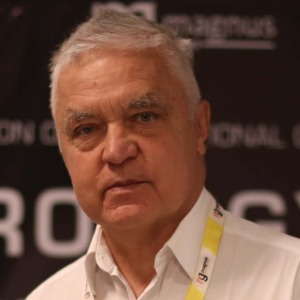Posterior Cerebral Circulation
The posterior cerebral circulation is a component of the posterior circulation of the brain. It is a major blood supply route to the occipital and temporal lobes of the brain, as well as the brainstem. The posterior circulation is essential for supplying oxygenated blood to various regions of the brain, though it is much smaller than the anterior circulation. It is comprised of a network of arteries and veins which provide blood flow that joins the internal carotid and vertebral arteries. The posterior cerebral circulation begins with two major arteries; the posterior cerebral artery (PCA) and the basilar artery. The PCA is a branch of the internal carotid artery and supplies blood to the occipital and temporal lobes of the brain, as well as the lower brainstem. The basilar artery is a branch of the vertebral artery and supplies the midbrain, pons, and medulla. Both the PCA and the basilar artery have multiple branches which extend throughout their respective portions of the brain. The posterior cerebral artery is divided into three major branches: the superior hypophyseal artery, the anterior inferior cerebellar artery, and the labyrinthine artery. The superior hypophyseal artery supplies oxygenated blood to the hypothalamus, which is responsible for regulating hormones and body temperature. The anterior inferior cerebellar artery supplies the inferior part of the cerebellum, the part of the brain responsible for motor coordination and balance. The labyrinthine artery supplies the inner ear and the brainstem nuclei responsible for hearing and balance functions.

Ken Ware
NeuroPhysics Therapy Institute, Australia
Robert B Slocum
University of Kentucky HealthCare, United States
Yong Xiao Wang
Albany Medical College, United States
W S El Masri
Keele University, United Kingdom
Jaqueline Tuppen
COGS Club, United Kingdom
Milton Cesar Rodrigues Medeiros
Hospital Santa Casa de Arapongas, Brazil




Title : Perception and individuality in patient cases identifying the ongoing evolution of Myalgic Encephalomyelitis/Chronic Fatigue Syndrome (ME/CFS)
Ken Ware, NeuroPhysics Therapy Institute, Australia
Title : Narrative medicine: A communication therapy for the communication disorder of Functional Seizures (FS) [also known as Psychogenic Non-Epileptic Seizures (PNES)]
Robert B Slocum, University of Kentucky HealthCare, United States
Title : Personalized and Precision Medicine (PPM), as a unique healthcare model through biodesign-driven biotech and biopharma, translational applications, and neurology-related biomarketing to secure human healthcare and biosafety
Sergey Victorovich Suchkov, N.D. Zelinskii Institute for Organic Chemistry of the Russian Academy of Sciences, Russian Federation
Title : Neuro sensorium
Luiz Moutinho, University of Suffolk, United Kingdom
Title : Traumatic Spinal Cord Injuries (tSCI) - Are the radiologically based “advances” in the management of the injured spine evidence-based?
W S El Masri, Keele University, United Kingdom
Title : Scalp acupuncture with functional electrical stimulation for the treatment children with autism spectrum disorder
Zhenhuan Liu, Guangzhou University of Chinese Medicine, China